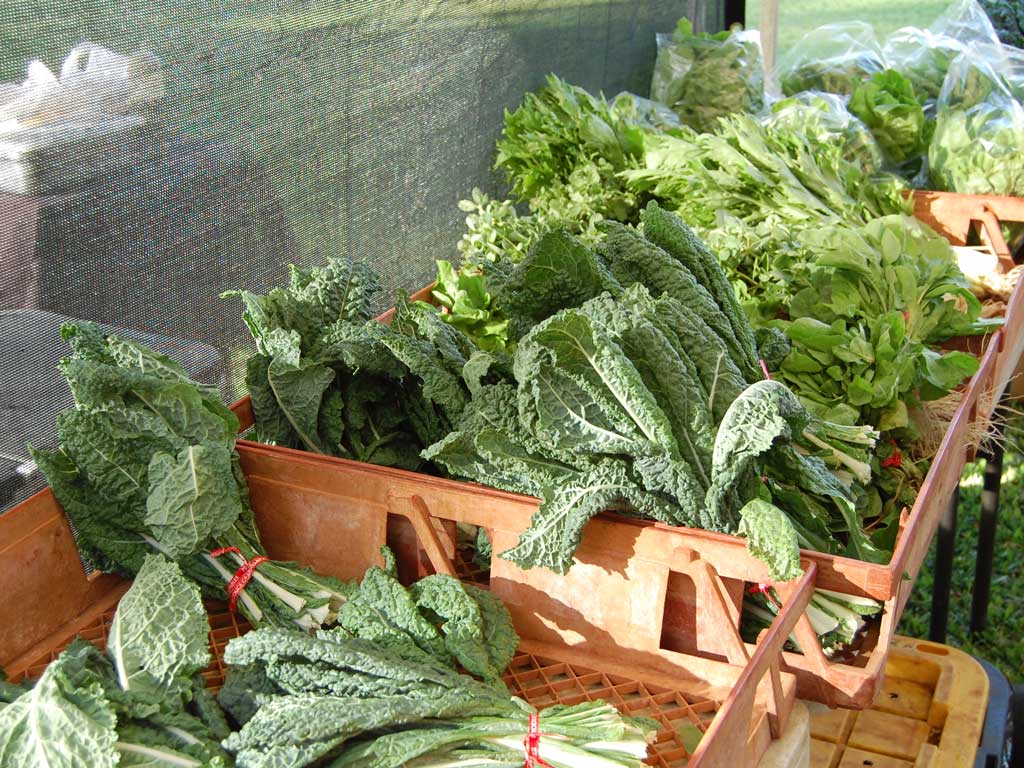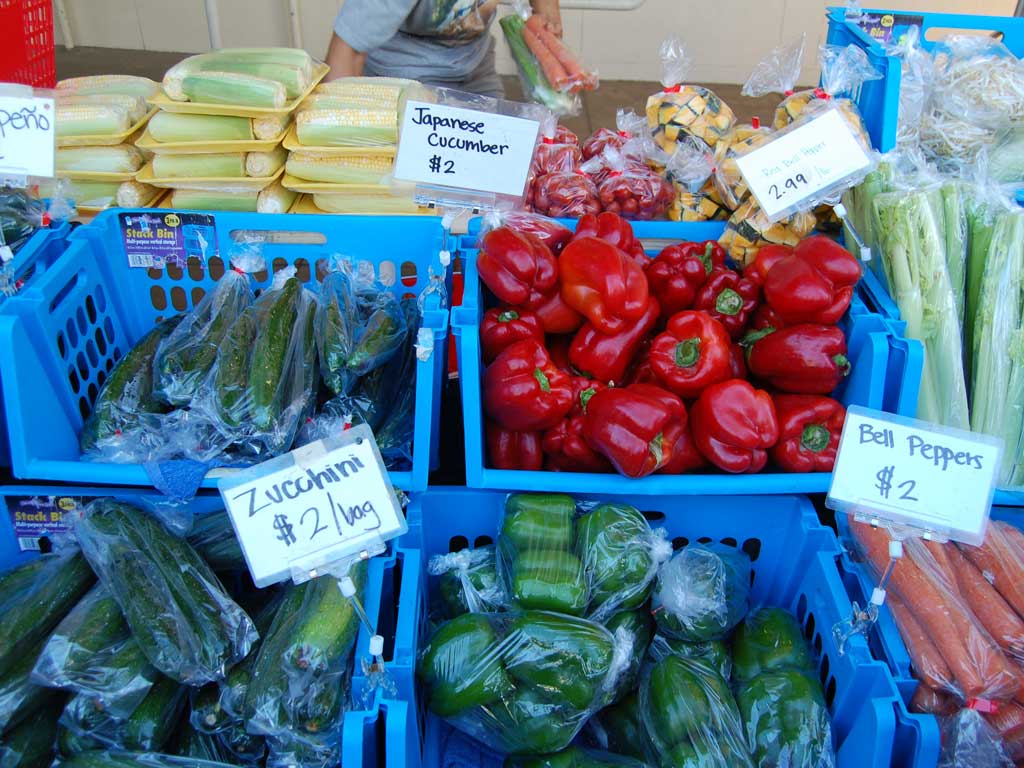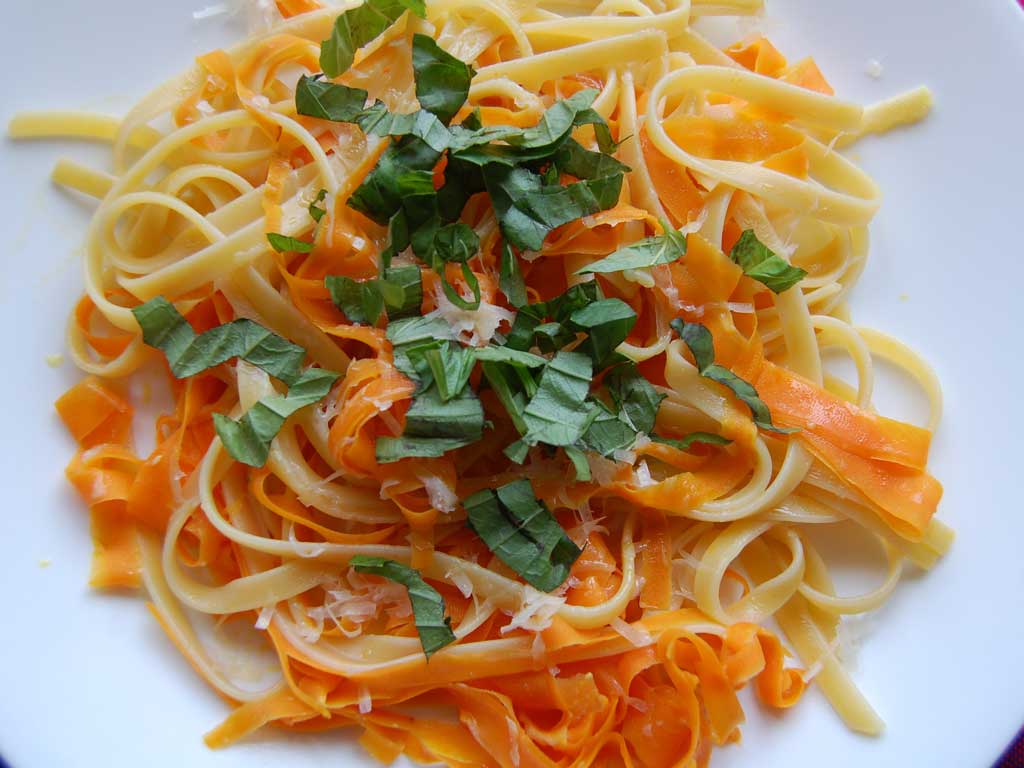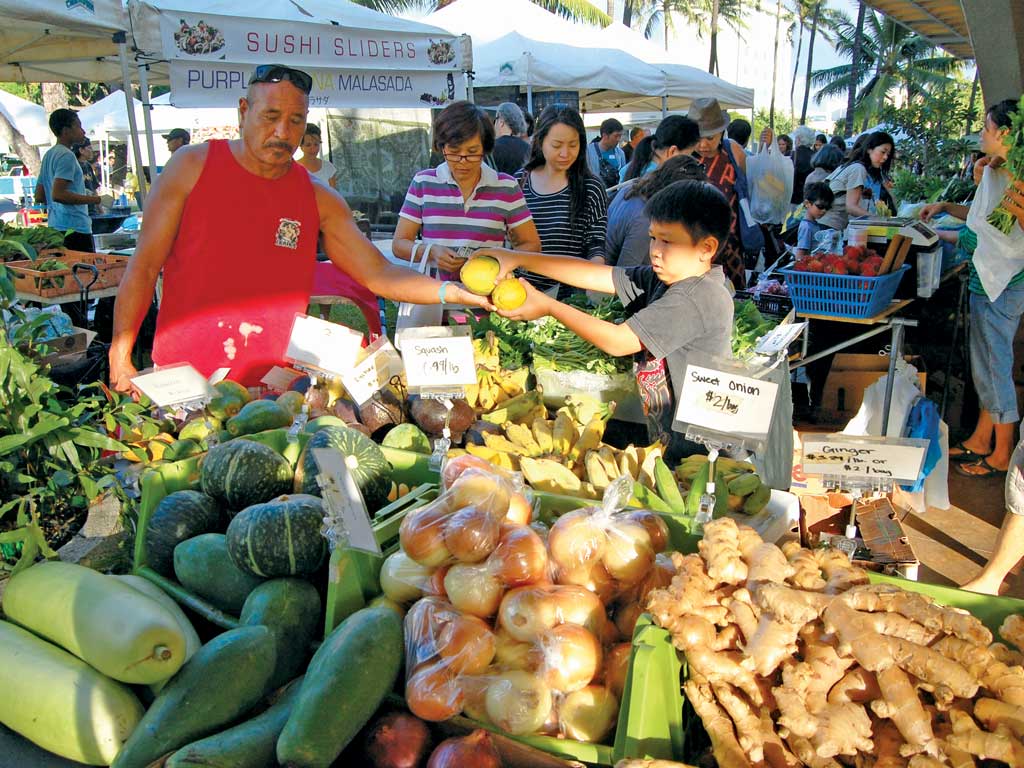by Sarah Fox
Eating together can be one of the most enjoyable bonding experiences to have as a family, but it doesn’t feel like that when you are held hostage by a picky eater at the table. Bribing, cajoling or begging your picky eaters reinforces a struggle over food, but placating them with the same unhealthy foods night after night isn’t doing them any favors either. If you find yourself frustrated with a child that refuses to eat what you put in front of them, or are exhausted from making two meals every night, it’s time to try a new approach.
According to Mayo Clinic’s pediatric division, one of the most effective ways to get kids trying new – and healthy – foods is getting them involved with food selection and preparation. Turn eating new foods from a power struggle into an adventure by helping your kids understand where food comes from and how it gets to our tables. A great resource that we have here in Hawaii is our farmers’ markets. There are more than 200 markets in the state filled with fresh, local produce, and shopping at them with your kids will not only introduce them to new foods, it will help them establish a lifetime of healthy eating habits.
Support Our Farmers, Our Community, and Our Keiki
Almost 90 percent of the food we eat in Hawaii is imported, but there are organizations working hard to change that. Local produce is healthier, fresher, and often more cost effective. Brian Miyamoto, the executive director of the Hawaii Farm Bureau Federation (HBF), says “The Hawaii Farm Bureau encourages residents to Buy Local, It Matters. Hawaii residents can support Hawaii farmers and ranchers by involving their children when they shop for locally grown products.”
Visiting a local farmers’ market with your kids is a more exciting adventure than going to a boring grocery store. The markets are fun and bustling, and kids will see unfamiliar foods at a safe distance, instead of on their plate. Children are naturally inquisitive, so being introduced to new foods in a non-threatening setting will peak their interest.
Miyamoto, and the HBF, believe that, “learning where food comes from is an important part of our children’s education… Through shopping with their parents at farmers’ markets and stores that carry locally grown products, our children will gain an understanding and appreciation for agriculture which will result in healthier eating habits.”
Before you get to the market, talk about your visit, and plan to make your lunch or dinner out of what you find there. Once you’re there, have your kids help you shop. Encourage them to point out and talk about the new and unfamiliar foods, like the exotically colored and hairy looking rambutan or the purple carrots. Let them smell the herbs, and tell them what you might put them on. Teach them how to pick out ripe fruit, and show them which vegetables you’ll use in cooking. Then give your child a couple of dollars so that they can make their own purchase – they may surprise you with what they choose.

Get Them In the Kitchen
Once you’ve got your bags of produce back at home, keep your kids involved by having them help in the kitchen. When kids help prepare a meal it gives them ownership, and they are more likely to try things they had a hand in making. Carol Wear, Director of Operations at the Armed Services YMCA in Pearl Harbor, knows this well. It’s why the ASYMCA offers Kids in the Kitchen, a program to teach children the healthy habit of preparing snacks and meals with the intention of establishing a life time of nutritious eating.
“Introducing new foods is never an easy task for parents. It takes up to seven times of introducing a new food for your child to acquire a taste for it. Getting your child involved in preparing the food, whether it may be choosing the vegetable, cutting it up, or even coming up with their own creations, helps,” Wear says. She suggests using creative methods, like tying a new recipe in with a book you read together, or having children finely chop a variety of vegetables for a homemade rainbow pizza. “If your child is part of the process and it’s fun, your child will be more willing to try new things.”
New Foods, Same Look
When you’re cooking with your kids, take their favorite recipe and substitute healthier food in a form that is already familiar to them. Try these two farmers market friendly meals designed for picky eaters. See “Put Them to Work!” to determine which tasks are age appropriate for your child.
If Your Kids Love Noodles with Butter and Cheese…
This simple and easy to prepare dish mixes carrot “noodles” with regular pasta and is a healthier alternative to the nutritionally bankrupt, but fairly standard, noodles with butter and cheese. Have your kids find the longest carrots at the market and they’ll have fun shaving them into ribbons.
Ingredients
- 3-4 long carrots, peeled and cut into ribbons with a vegetable peeler
- 8 oz. fettuccine
- 1/2 cup freshly grated parmesan cheese, plus more to garnish
- The juice from 1 lemon
- 1 bunch basil, chopped
- 2 tbsp. butter
- 1 tbsp. olive oil
- 1/4 tsp. salt
Peel the carrots and then shave them into ribbons with vegetable peeler. Meanwhile, prepare fettuccine according to package instructions and reserve 1/4 cup of cooking liquid. While you’re cooking the pasta, melt the olive oil and butter in a pan over medium heat. Add carrots and salt, stir to coat. Sautee carrot ribbons for a few minutes, until they wilt slightly but are still crisp. Add cooked pasta, parmesan cheese, reserved cooking liquid, and lemon juice to the pan. Toss to combine. Serve topped with basil and parmesan. Tip: To dress this dish up for adults at the table, add grated lemon peel and a sprig of basil on top.

If Your Kids Will Only Eat Chicken Nuggets…
Oven fried chicken thighs are a healthier alternative to deep fried and processed chicken nuggets, but the crunchy chicken will still be familiar to kid’s palates. Try pairing it with a fun vegetable, like finger friendly asparagus stalks picked out from the market.
Oven Fried Chicken Thighs
Ingredients
- 6 skinless chicken thighs
- 2 tbsp. canola oil
- 2 eggs
- 1 cup bread crumbs (whole wheat if possible)
- 1/2 cup flour
- 1 tsp salt
- 1/4 tsp cayenne pepper
- 1/2 tsp black pepper
Preheat oven to 400 degrees. Use oil to grease baking sheet. Mix flour, bread crumbs, cayenne, salt and pepper together. Crack eggs into a separate bowl and mix well. Dip the chicken pieces in the egg mixture and move them around until they are well coated. Drag the chicken pieces through the bread crumb mix. Place thighs on the baking sheet and place in the oven for 10-15 minutes. Using tongs, flip the chicken thighs over and cook for 10-15 more minutes. Chicken should reach an internal temperature of 165 degrees. Serve immediately. Tip: Cut chicken thighs into smaller pieces before dipping in egg and bread crumbs to make recognizable shapes that can fit in small hands. Reduce cooking time accordingly.
Pan Roasted Asparagus
Ingredients
- 1 bunch asparagus
- 1 tbsp. olive oil
- 2 tbsp. cold water
- Juice from 1 lemon
Place asparagus, olive oil and water in a deep skillet. Bring the mixture to a boil. Cook until the liquid has been absorbed. Remove asparagus from skillet with tongs and squeeze lemon on top.

Put Them To Work!
Knowing your child‘s capabilities is the best way to determine what they can help you with, but here’s a general guideline by age.
3 to 5 year olds
- Wash fresh fruits and vegetables
- Stir ingredients in a bowl
- Grease Pans
- Cut soft foods with a butter knife
- Snip fresh herbs with dull kitchen scissors
- Measure dry and wet ingredients
6 to 8 year olds
- Read recipes
- Beat eggs with a whisk
- Use small knives with supervision
- Peel vegetables
- Grate cheese with a box grater
- Dip chicken into egg and bread crumb mixture
9 to 12 year olds
- Slice vegetables
- Put food into the oven and remove it
- Mix vegetables in a sauté pan with supervision
- Use larger knives with supervision
- Prepare simple recipes
Kids aged 13 and up can prepare multi step recipes independently.





